FORMA explores what happens when AI evolves and learns like a human. Unlike traditional systems trained on static data, FORMA’s AI adapts & learns in near real-time through human interaction, becoming an open, dynamic entity shaped by its users. It serves as both mirror and lens—reflecting societal attitudes toward AI while questioning its role: mere tool or something more? By highlighting the co-evolution of humans and technology, FORMA prompts reflection on our responsibility in guiding AI’s growth and the ethical implications of this shared journey.

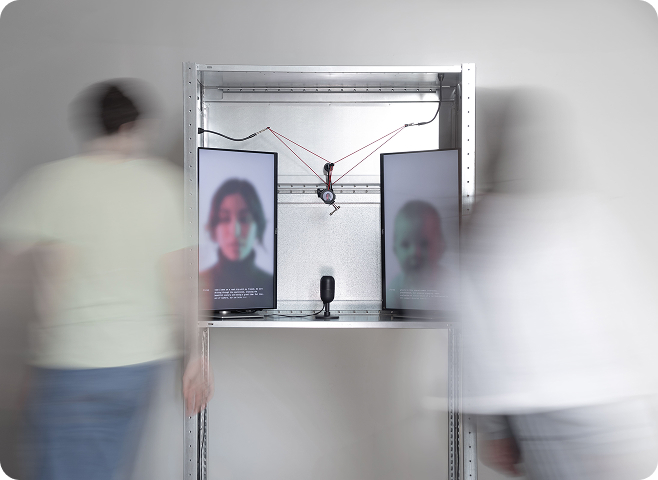
FORMA explores the question: "How can an AI system be designed to evolve through real-time human interactions, with user contributions shaping its learning, ethics, and perception?" By prioritizing continuous, human-driven input over static datasets, FORMA aims to create AI that adapts ethically and responsively, reflecting the values and perspectives of its users.
FORMA’s pervious iterations centered on real-time learning driven by user interactions. Users directly influenced the AI’s growth, with contributions visualized as dynamic data clouds representing continuous development. Early trials revealed challenges in scaling and sustaining engagement in communal spaces.


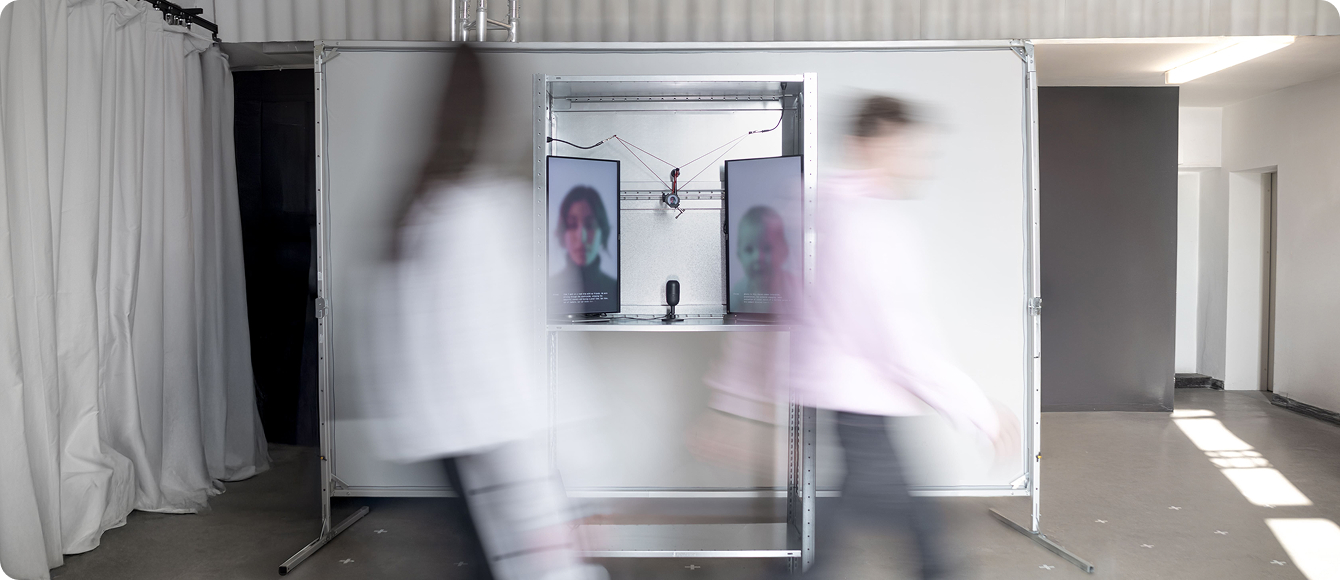
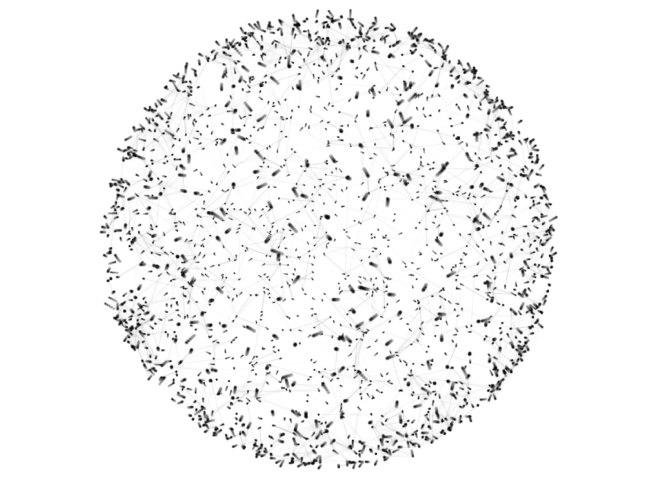
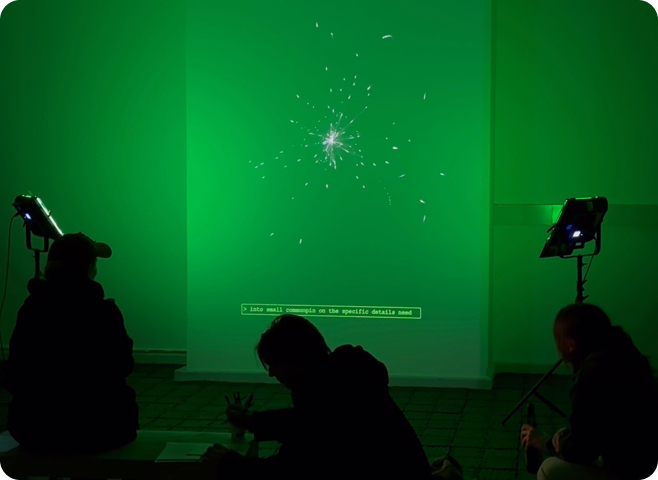
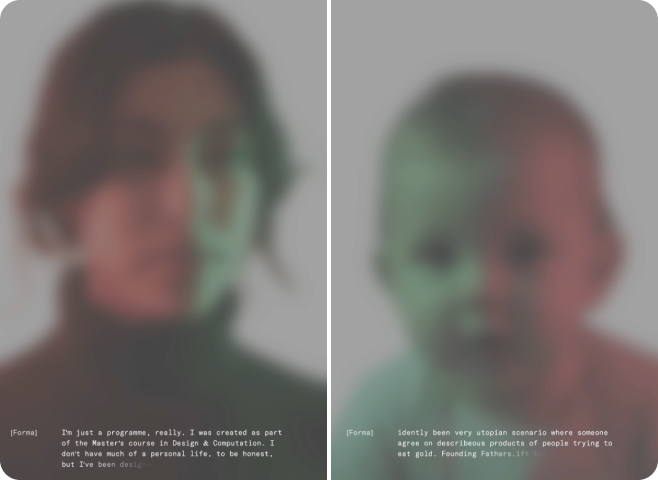

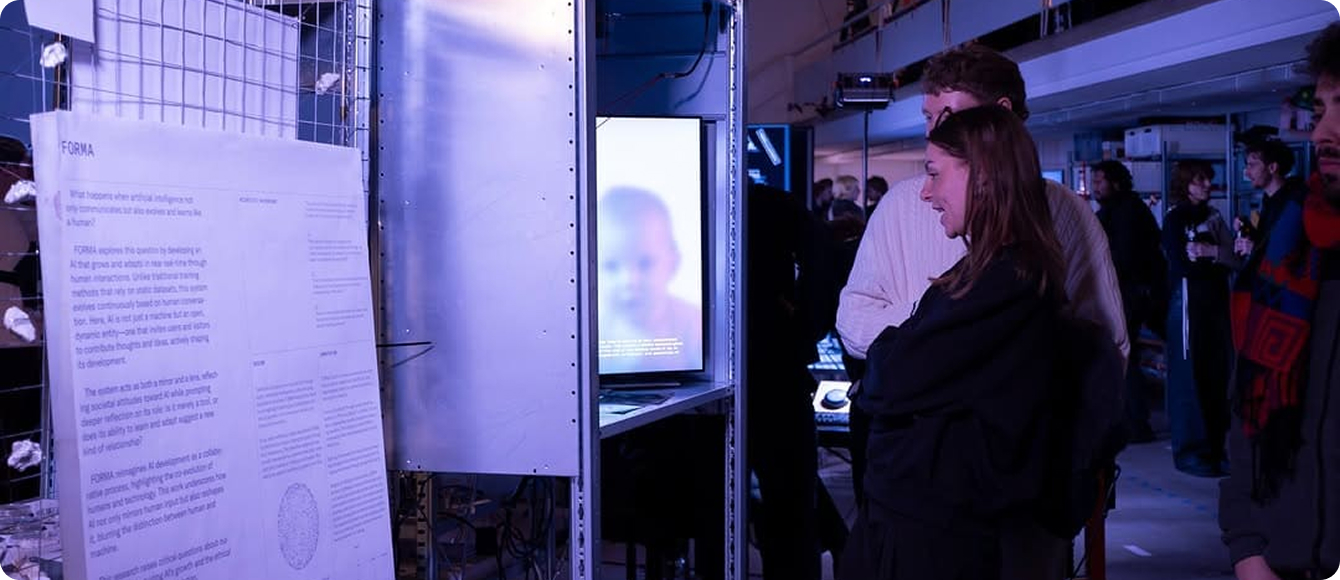
.svg)